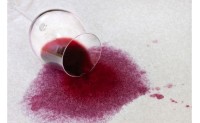
When tasting a wine it is important to follow 3 STEPS, the first ons is the VISUAL PHASE.
1~ VISUAL PHASE
.png)
Aspects to consider:
- The color of the wine: as a general rule, darker wines tend to be stronger na hace more powerful smells.
- The density: We can appreciate this through the tears, the longer they take to fall, the denser the wine will be and therefore, it will have a higher concentration of alcohol.
- Sharpness and transparency.
- The foam: if it does not have any coloration, it will be a young wine. If, on the contrary, it is a tinted foam, it will indicate that it is a wine for aging.
Tips: if it does not have any coloration, it will be a young wine. If, on the contrary, it is a tinted foam, it will indicate that it is a wine for aging.
It is also important to choose a good glass and always hold it by the stem to prevent the wine from heating up.
2~ OLFATIVE PHASE
.png)
1. First we will smell the wine by putting our nose in the glass to appreciate the so-called primary aromas (those of the grape variety). In these, the fruity, floral and sometimes spicy series predominate.
2. First we will smell the wine by putting our nose in the glass to appreciate the so-called primary aromas (those of the grape variety). In these, the fruity, floral and sometimes spicy series predominate.
3. In the case of aging wines, we will shake the glass a second time to appreciate the tertiary aromas (those from the aging itself). For the aromas of aging the ranges are multiplied.
3~ TASTING PHASE
.png)
This last phase is developed in three stages:
1. ATTACK phase. First we will have a small drink but without swallowing the wine. We will pass the wine from one side of the mouth to the other and we will try to discover the basic flavors: sweet, sour, salty and bitter. Then we will try to determine the texture.
2. During the second part we will swallow the wine and analyze the aspect called RETRONASAL. We will expel the air through the nose and we will be attentive to the duration of the sensations that the wine leaves us in the nose.
3. ️Finally, we will analyze all the flavors and aromas that remain in the mouth. If the persistence in the mouth lasts more than 6 seconds, we will say that it is a wine with high persistence.
NOW YOU ARE READY TO TASTE!


